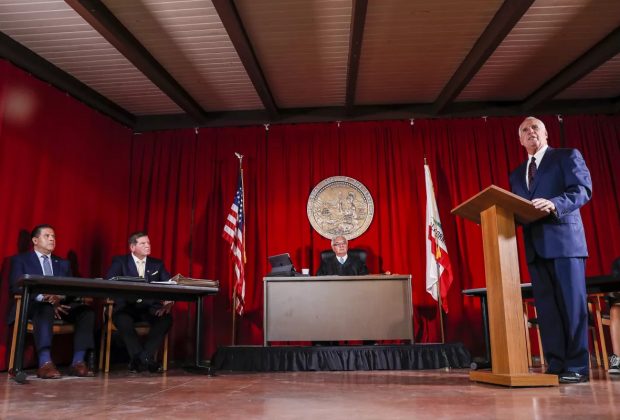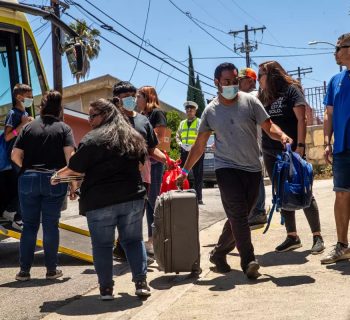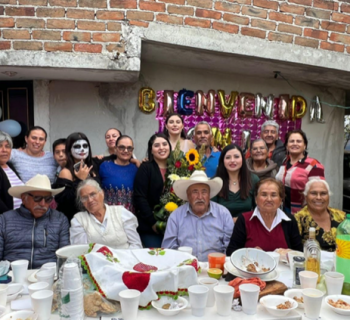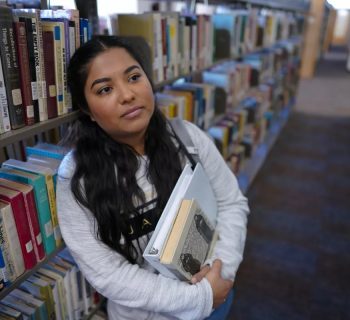By Gustavo Arellano | Los Angeles Times | SEP. 18, 2022 | Photo by Robert Gauthier
They sent out the hard-shell tacos on Thursday at Mitla Café the same way they have for 85 years — freshly fried, with a blizzard of cheddar cheese on top and a side of history.
The diner off the former Route 66 in San Bernardino is one of the oldest Mexican restaurants in Southern California. Glen Bell of Taco Bell infamy bugged the founders during the 1950s for their taco recipe, and they generously obliged.
More importantly, Mitla has served as a neighborhood anchor in the city’s Westside barrio for decades. It’s a place where historic civil rights battles were planned and community groups still meet over heaping combo plates and multiple orders of those crunchy, sublime tacos.
Tacos were what San Bernardino Superior Court Judge John Pacheco ordered as he waited for the start of a civics experiment.
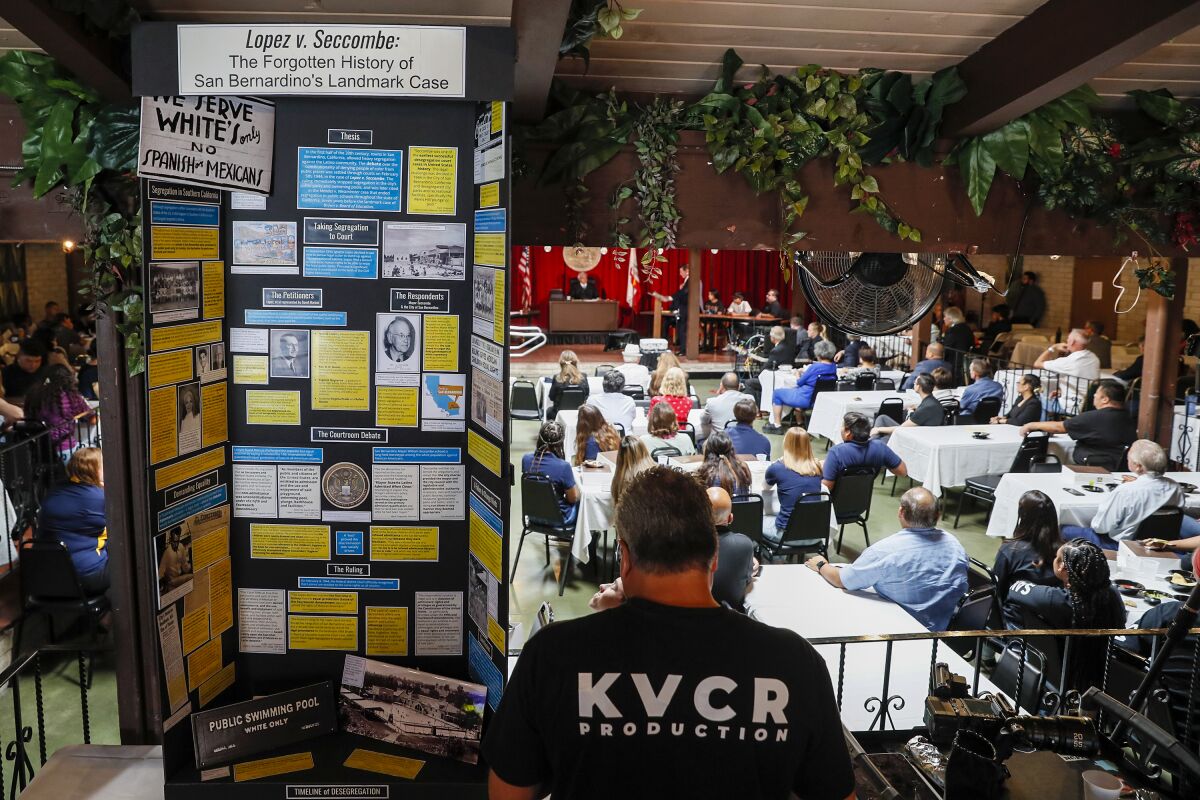
Pacheco was about to stage a free noontime reading of the closing arguments for Lopez vs. Seccombe. In 1944, two newspaper editors and a Catholic priest sued San Bernardino on behalf of its 8,000 Mexican American residents, who were only allowed to use the city’s sole swimming pool the day before the water was drained.
City officials argued that Mexicans were too dirty to use the facilities at any other time. Lawyer David C. Marcus successfully argued that this amounted to discrimination. It was among the earliest class-action civil rights lawsuits in the United States, influencing far more famous decisions like Mendez et al. vs. Westminster and Brown vs. Board of Education.
“Even though it’s a monumental case, it doesn’t have any attention,” Pacheco said. “I wanted to bring it here. ¡Mira alli!”
He then pointed to framed photos featuring Mitla Café regular Cesar Chavez. “This is where San Bernardino Chicanos made things happen,” he said.
Conservative colleagues have accused Pacheco of trying to push an “agenda” by reenacting Lopez vs. Seccombe.
“I’m not trying to be political,” he said. “I’m just reenacting facts.”
All strata of San Bernardino’s Westside had turned out. The politico class gobbled up huevos rancheros in sharp suits and power skirts. Older residents decked out in Panama hats and guayaberas waited for tables. Outside, a bus pulled up with high school students from Yucaipa, Calimesa, San Bernardino and other Inland Empire communities.
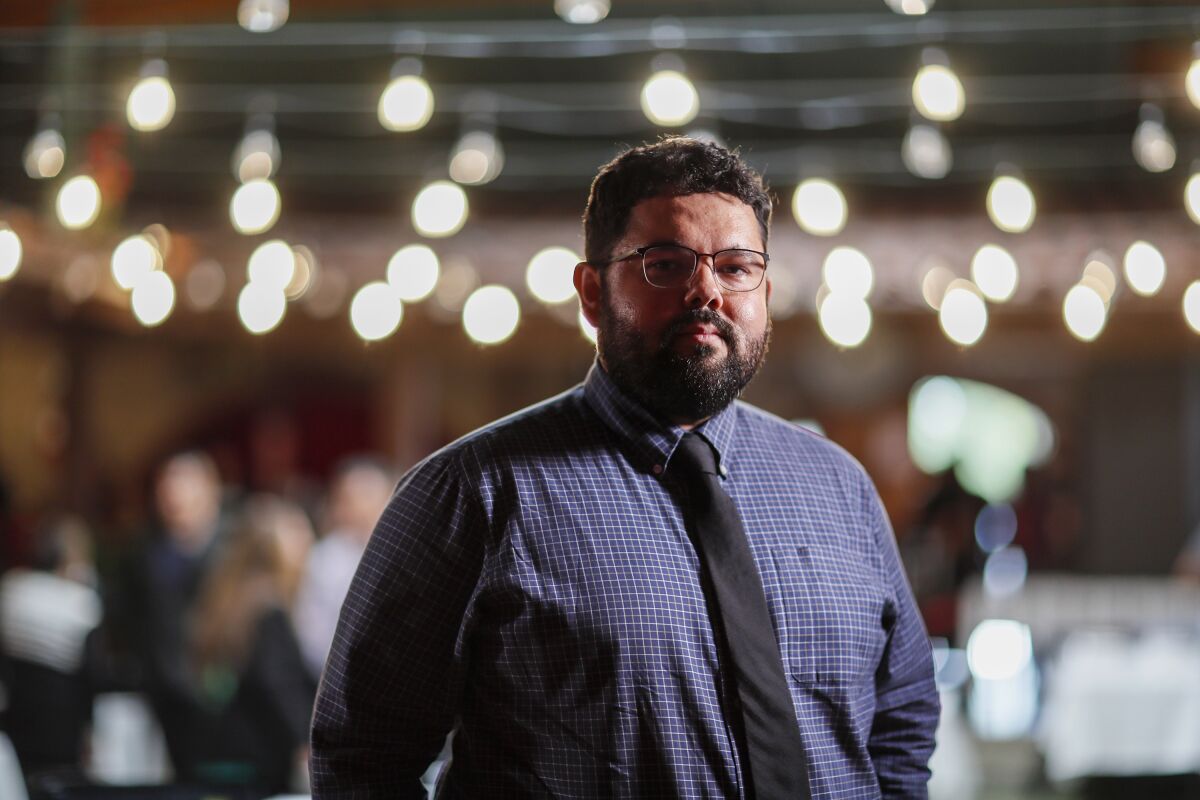
Near the center of the restaurant, Brown University history professor and San Bernardino native Mark Ocegueda accepted hugs and handshakes. He has arguably done more to promote Lopez vs. Seccombe than anyone else through lectures, academic papers and online posts.
In fact, Pacheco was inspired to stage the case after stumbling onto Ocegueda’s doctoral dissertation on the subject.
“There’s this idea that in the Inland Empire, there’s not much important history that happened here that helps us understand California history,” said the 34-year-old Ocegueda. “But this case, it’s such a stark example of why this Mexican American community is important to how we can understand California history and the American West.”
I asked if he found it odd that an event like this was happening at a restaurant at lunchtime.
“We could’ve packed a whole theater at a more convenient time,” the profe replied with a laugh. “The fact that it’s at Mitla Café, such an important site in our neighborhood … If there’s going to be an event here, people know it’s going to be something special.”
It was showtime.
The Mitla Café banquet room held about 200 people. A camera crew with the local PBS station stood ready to film. Free pocket copies of the U.S. Constitution sat on a table at the front of the entrance.
Nearby, Christian Gonzalez, a senior at Oak Hills High School outside Hesperia, stood in front of a poster board featuring newspaper clippings about the case, photos of the plaintiffs and crisply written captions.
“It was really hard to find this information, but I feel happy to know that a lot of this is starting to get known,” Gonzalez said. “This was a stepping stone for human rights.”
He chatted up his work with University of Redlands ethnic studies professor Jennifer Tilton. She teaches Lopez vs. Seccombe to her students, few of whom have ever heard of it.
“They always come wanting to know how racism played out in their backyards,” she said. “Students are eager. Students are hungry. They don’t want a history of Alabama — they want a history of here.”
Everyone happily snacked on burritos, taquitos, chips and guacamole. But there wasn’t a single crunch heard in the house when Pacheco began the program.
“This is where it all started,” the judge said over the loud hum of electric fans and the kitchen. “This city is amazing. It has so much history. You kids should be proud of where you’re from.”
Ocegueda gave a PowerPoint lecture about the protagonists. There was a short video with Judith Valles, the first Latina mayor of a large American city, whose parents were heavily involved in the fight.
Then the time to reenact the oral arguments arrived.
“We’re going to take a deep dive,” Judge Pacheco said to audience giggles. “No pun intended.”
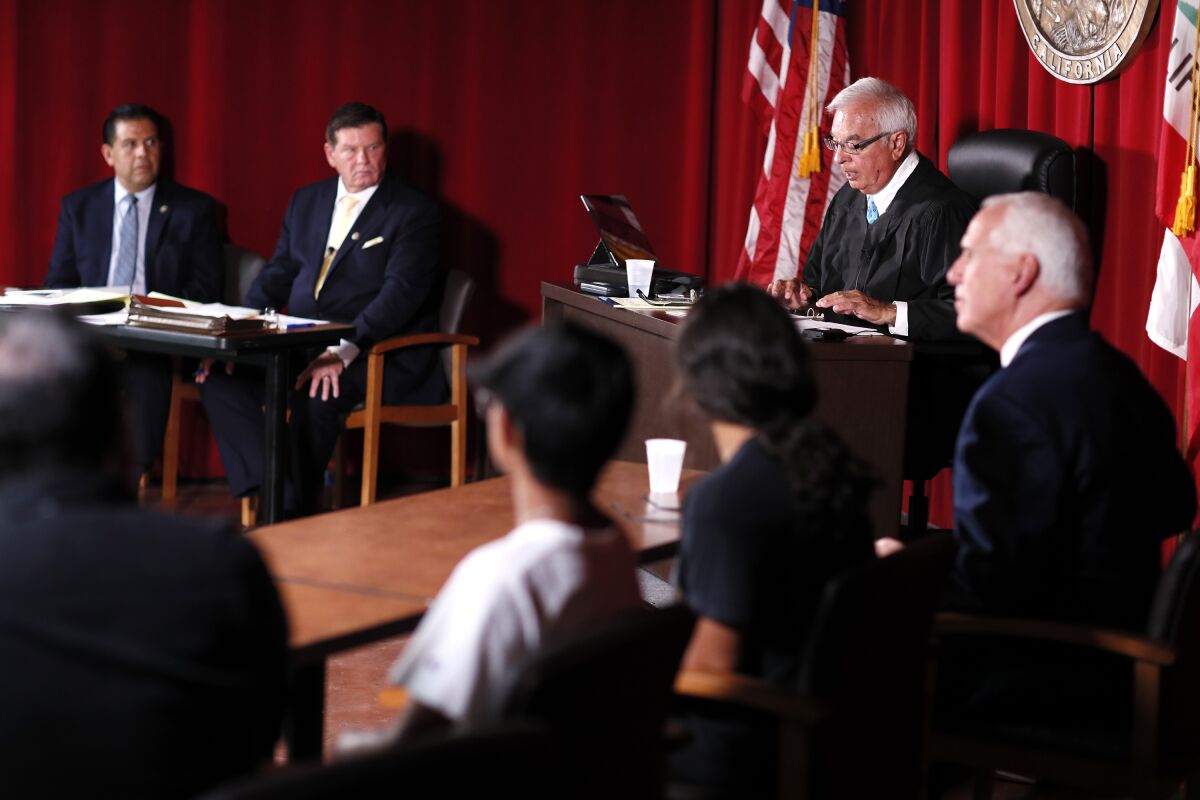
Local lawyer Michael Bidart took the role of Marcus, representing San Bernardino’s Mexican residents.
Another lawyer, Michael Scaffidi, played H.R. Griffith, who defended the racist policies. San Bernardino Mayor John Valdivia stood in for his long-ago predecessor, William Seccombe. Two local kids acted as the children at the center of the case, who were banned from the swimming pool.
Presiding over everything was California appellate court judge Manuel Ramirez, who sat underneath a large replica of the Great Seal of California. He would be Leon Yankwich, the federal judge.
Kids and adults alike whipped out their phones and hung on every word for the next 20 minutes.
Bidart channeled Marcus’ passion when he responded to a query from Judge Yankwich — err, Ramirez — about whether the era’s separate-but-equal policies meant that Mexican Americans could just go to a pool of their own instead of demanding desegregation.
“They don’t have another pool to go to,” Bidart replied. “They go swim in the Santa Ana River.”
Ramirez perfectly played the role of a skeptical judge who became slowly convinced. But the true star was Scaffidi, tasked with defending the indefensible. His transformation from cocky to sputtering was a master class in slow burns. When he spat out words like “pachuco” and “community agitators” with venom, the audience gasped and grumbled with true emotion.
After the arguments, Judge Ramirez addressed the audience as himself. Some of his peers wonder why civil rights cases get so much attention from the public, he said, when other landmark decisions like Gideon vs. Wainwright — which guarantees legal counsel to anyone accused of a crime — and Marbury vs. Madison — which allows federal courts to strike down unconstitutional laws — are increasingly ignored.
“What is it that grabs our hearts and stirs our souls about these [desegregation] cases?” Ramirez asked.
He answered his own question: it’s the “fathers and mothers” who “dared to stand up to forces far bigger than them and collectively said, ‘This isn’t right. This isn’t America.’”
The crowd gave Ramirez and his fellow amateur actors a standing ovation.
Afterwards, students talked excitedly and lined up to meet the cast.
Nicole Vega, who was chaperoning students from San Gorgiono High, said the reenactment “hit me immediately.” Her grandfather and his brothers were airmen deployed to Europe during World War II, so San Bernardino’s discriminatory pool policies “would’ve applied to them.”
“Seeing history come to life was crazy but great,” said Aniya Moore, a San Gorgiono senior. “I didn’t know anything about it, but now I want to know more.”
Her friend, fellow senior Nautika James, agreed.
“More schools should hear about it,” she said. “These are home stories.”

